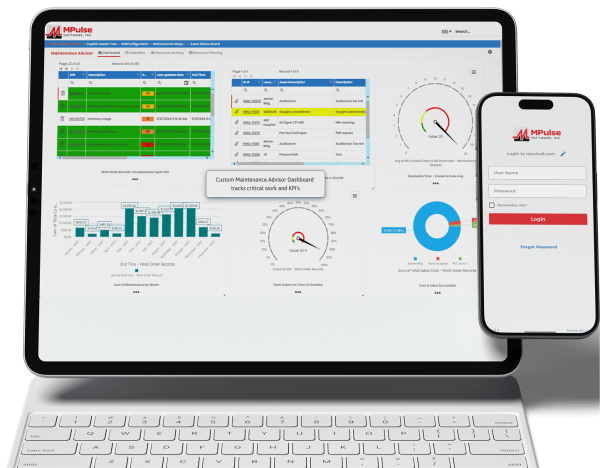A lot of capital sits in your stockroom. Yet inventory management is consistently one of the most overlooked parts of maintenance management. Many organizations still simply order the parts they need when they need them. Maybe they even buy an extra one, which usually sits on the shelf, forgotten and unused.
But, many organizations realized the importance of inventory management when COVID-19 hit in 2020. Suddenly shipping delays and limited supplies made it hard to get basic cleaning supplies, not to mention vital parts.
Inventory management can help you prevent time- and money-wasting problems like running out of parts, searching for lost parts, or duplicating inventory you didn’t know you had.
And CMMS can help.
Table of Contents
How Inventory Management Saves Time & Money
Inventory Management can help quickly identify what you need for which piece of equipment. It helps your organization save time and money by improving tracking, stocking, ordering, and inventory processes. When an emergency arises, this information also provides critical data for making cost-efficient decisions.
With CMMS software, you’ll know stocking levels, reorder points, storage locations, and supplier information with just a click. You can also track various units of measure for a single inventory item. For example, you might purchase oil by the barrel, but use it by the quart.
Benefits of Using Inventory Management Software
The biggest benefit of Parts and Supplies Inventory Management is controlling your cost of maintenance. Inventory Management Software gives you the ability to…
- Identify where parts or materials are stored, making it quicker and easier for staff members to find them and preventing duplicate orders because someone didn’t look in the right place.
- Enable coworkers to reserve certain parts, ensuring the right parts are available for a particular job. You can also track issue quantities for situations where you only have one part on hand when the job takes two.
- Control your stock based on need and availability, so the right parts are on the shelf, yet you can minimize other parts that are used less frequently. For example, if a critical part has a three-week lead time, you can adjust stocking levels to make sure it is available when your staff needs it.
- Track shipments, vendor performance and warranty information, including slow-moving parts to return to the vendor. That helps you control capital outlays on unused or underused parts and materials.
- Automate cyclical inventory counts, reducing the man hours needed and ensuring the parts or materials in the system are actually sitting on the shelf or in the parts bin.
[related-content]
Your organization can save time and money by improving tracking, stocking, ordering, and inventory processes.
CMMS is the best tool you have for gathering, analyzing, and reporting data about your maintenance operations. Contact us to learn more.






